If you cannot boot into Windows and see the error code 0xc0000001 on your screen, it means some booting files have become corrupted. There may also be other problems with the booting device or issues with the boot sector of your PC. Fortunately, there are several ways by which you can sort out the problem.
Preparing your system for boot
Before you can try out the various solutions to fix the 0xc0000001 error, you need to check whether you can boot into Windows. To do that,
- Restart your computer and enter BIOS Setup. Depending on the brand, make, and model of your computer, you may need to press the
F2,F12,F10or some other key while your PC is booting to enter the BIOS. - Once you've entered the BIOS, look for the SATA Configuration setting, which can appear as 'SATA Mode', 'Configure SATA', or 'SATA Operation'.
- Change the SATA Mode to AHCI if it is set to RAID and change it to IDE if it is set to AHCI.
- Save the changes and exit the BIOS. Then try to boot into Windows. If the method does not work, enter the BIOS again and revert the changes you made earlier before proceeding with the solutions mentioned below.
Fix 1: Use Startup Repair
The Windows Recovery Environment (WinRE) has several tools that can help you diagnose and fix problems with your PC. Startup Repair is one such tool that you can use to fix the 0xc0000001 error code.
- Press and hold the
Shiftkey on your keyboard and restart your computer. - Your computer will boot into the Windows Recovery Environment. Click on 'Troubleshoot' from the options in front of you.
- Next, click on 'Advanced Options' and finally on 'Startup Repair'.

- Wait until Startup Repair performs the repairs and then restart your computer.
Fix 2: Repair the Master Boot Record
If the Master Boot Record (MBR) is corrupt, you may run into the 0xc0000001 error and will have to access Command Prompt from the Windows Recovery Environment to repair it.
- Open the Windows Recovery Environment as explained above and click on 'Troubleshoot' and then on 'Advanced options'.

- When the command prompt window appears, type the following commands one by one and press Enter:
bootrec /fixmbr
bootrec /fixboot
bootrec /scanos
bootrec /rebuildbcd - Close the window and restart your computer.
Fix 3: Use the Check Disk utility
If your primary storage device has bad sectors or errors, it can also result in the 0xc0000001 error. In this case, you will need to run the Check Disk utility to resolve the problem.
- Open the Command Prompt window from the Windows Recovery Environment as previously explained.
- When the window opens, type
C:and press Enter to go to the system drive. You can replace the letter 'C' with a different letter depending on which letter is assigned to your system drive. - To start scanning the disk, type
chkdsk /f /rand then pressyand wait for the scan to start. Once it is complete, you can restart your PC.

Fix 4: Copy SAM Files
Damaged SAM files can also cause the 0xc0000001 error and you will need to repair them to fix the problem.
- Boot your computer using the installation media.
- Enter the Windows Recovery Environment and click on 'Troubleshoot' and then 'Advanced options'.
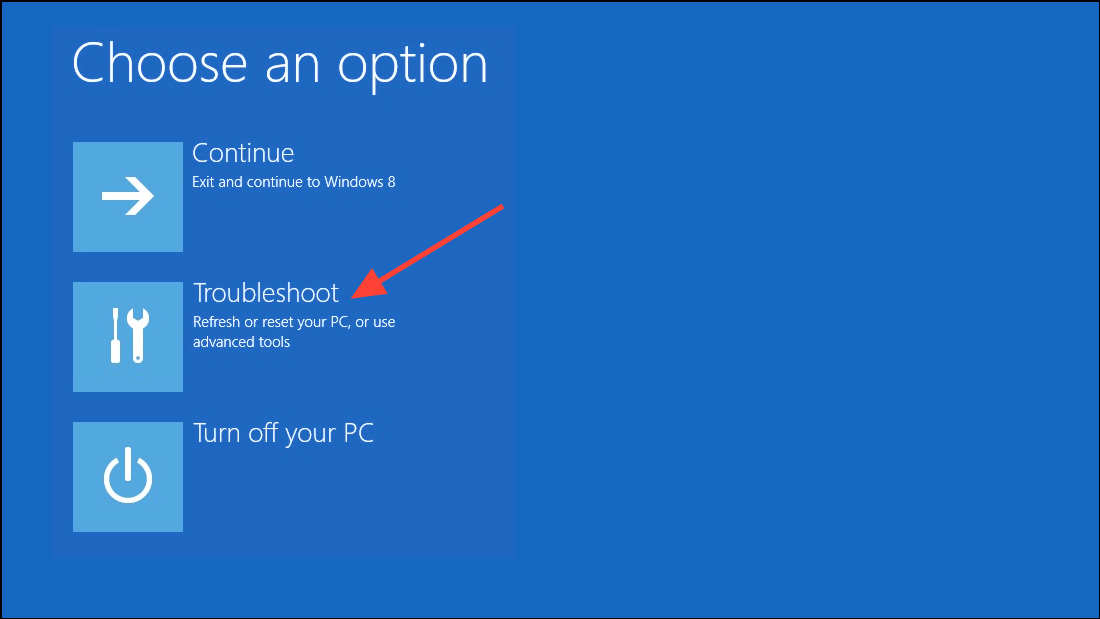
- On the Advanced options page, click on 'Command Prompt'.
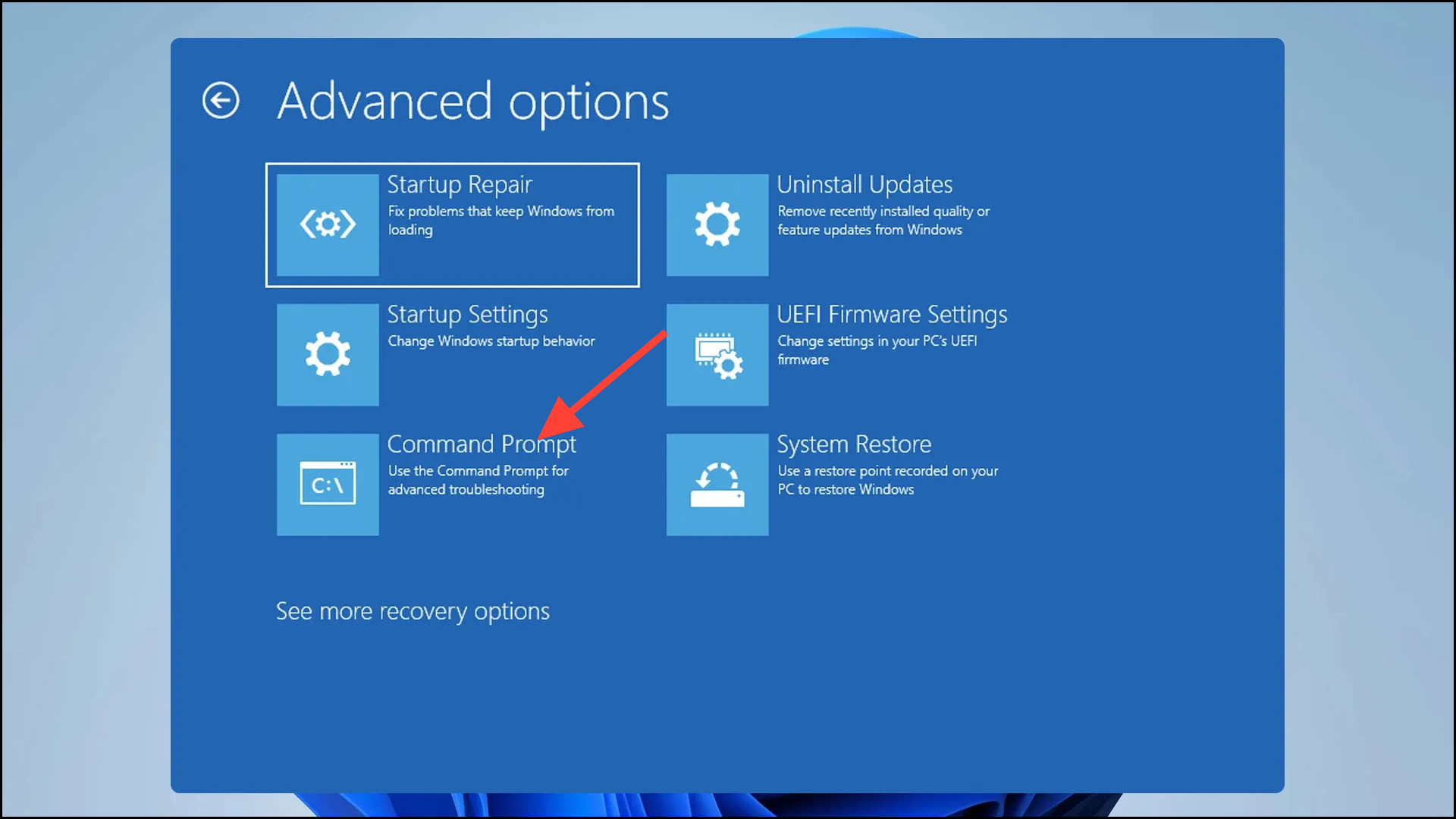
- In the Command Prompt window, type
copy C:\Windows\Repair\Sam C:\Windows\System32\Config\and press Enter. PressYwhen a prompt appears asking whether you want to overwrite the original file and then reboot your PC.

Fix 5: Run System File Checker
Corrupted system files can also result in the 0xc0000001 error and can be fixed using the System File Checker built into Windows.
- Boot from your installation media and click on 'Repair your computer'.
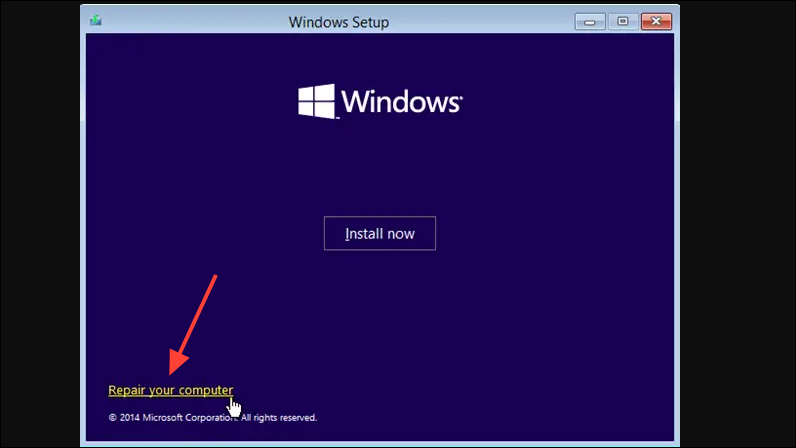
- When the Windows Recovery Environment appears, open Command Prompt as explained above. Then type
sfc /scannowin the window and press Enter.
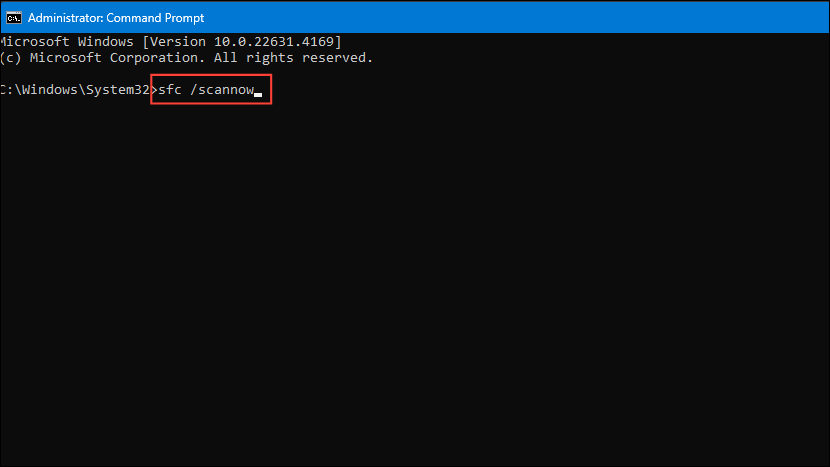
- Wait for the scan to complete and then restart your computer.
Fix 6: Use the BCDBOOT tool
- Boot from your Windows installation media or recovery media and then use
Shift + F10to open a Command Prompt window. - When the Command prompt opens, type
diskpartand press Enter.
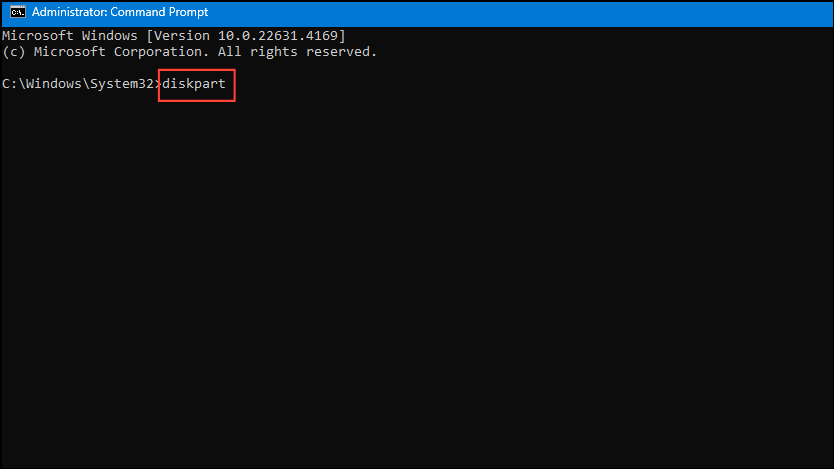
- Then type
select 0and press Enter again.
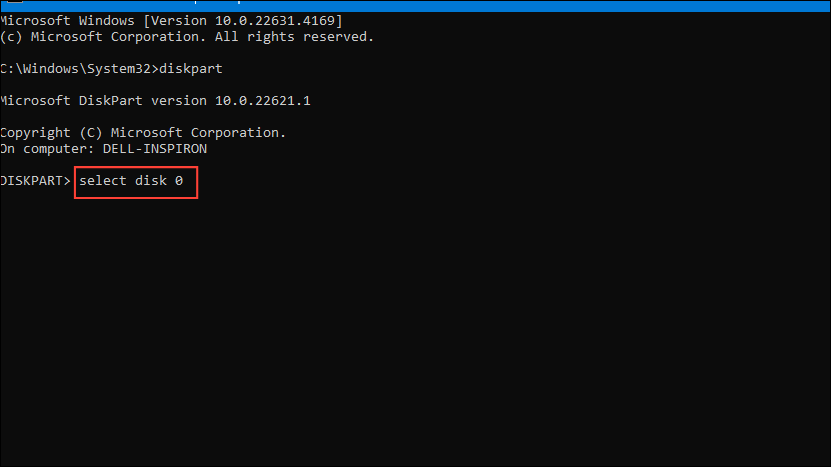
- Now type
list partitionand press Enter again. Check the size of the System Partition after entering this command.

- Now type
list volumeand press Enter to find the driver letter of the system drive and the volume number of the system partition.

- Now enter the following commands one by one, pressing Enter after each one to assign a drive letter to the system partition:
select volume xassign letter=z
exit
Here, replace 'x' with the letter of the volume you want to select and replace 'z' with the letter you want to assign. - Finally, type
bcdboot C:\windows /s Z: /f ALL, replacing 'C' with the drive letter of your system volume. - Close the command prompt window and remove your Windows Recovery Media before trying to boot into Windows normally. If it does not work, repeat the above steps and end with the following command:
bcdboot C:\windows /s Z: /f UEFI.
Fix 7: Remove problematic programs in Safe Mode
If a third-party program is causing the 0xc0000001 error, you can remove it by booting into Safe Mode. You will need your Windows installation USB or DVD for this method.
- Insert your Windows installation media into your computer and boot your PC using it.
- Once your computer boots, access the Windows Recovery Environment and click on 'Advanced options' and then 'Startup settings'.
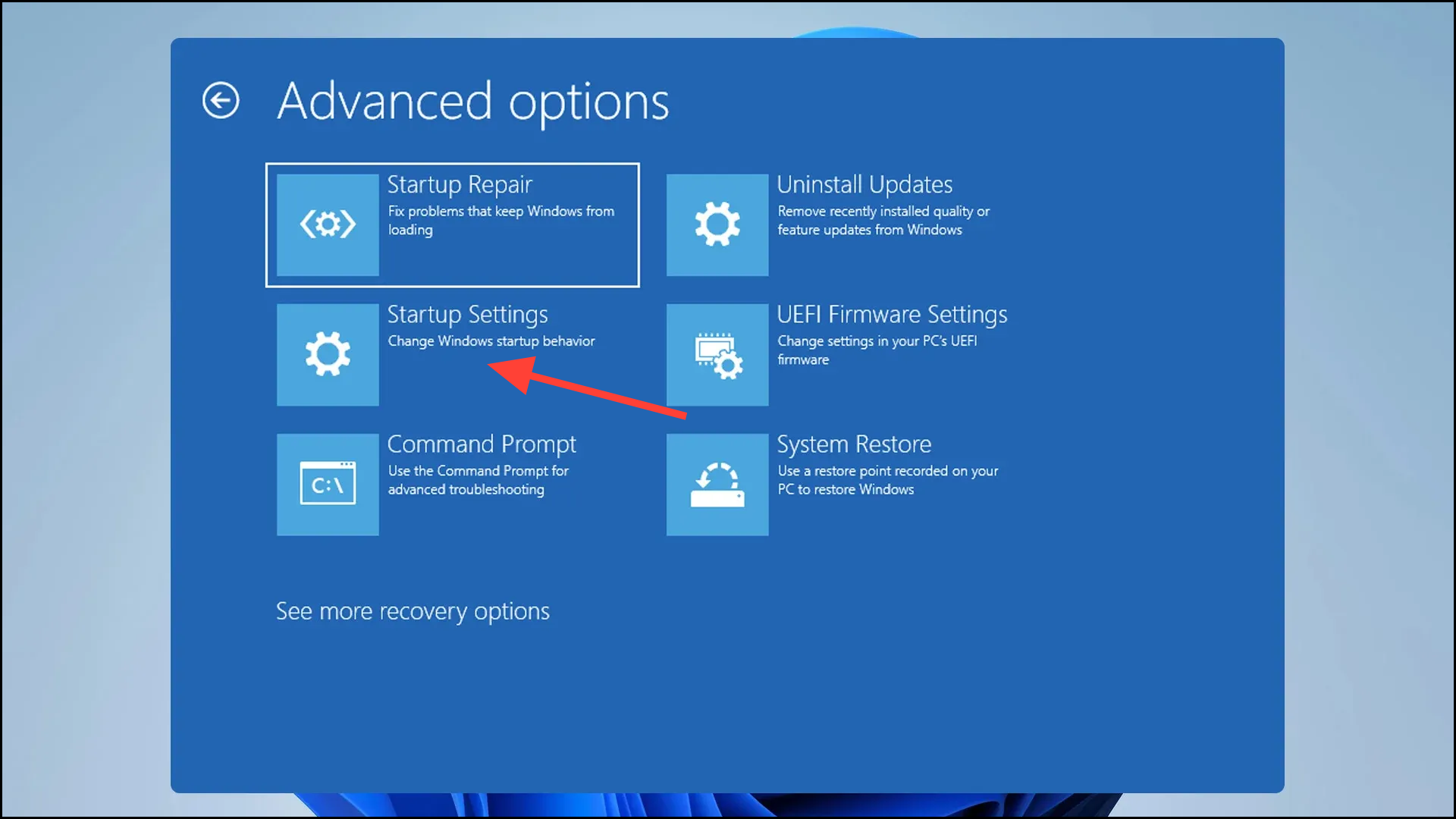
- Click on the 'Restart' option and then press the
F4key. - Once you boot into the Safe Mode, open the Settings app using the
Win + Ishortcut and click on 'Apps' on the left.
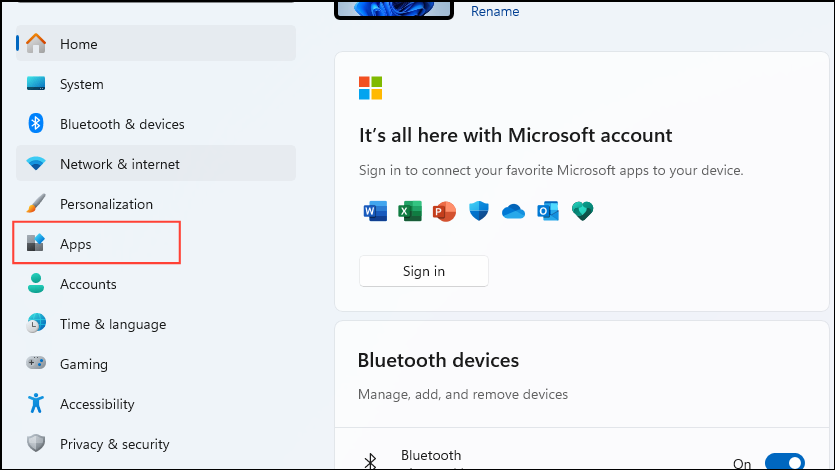
- On the Apps page, click on 'Installed apps' at the top.
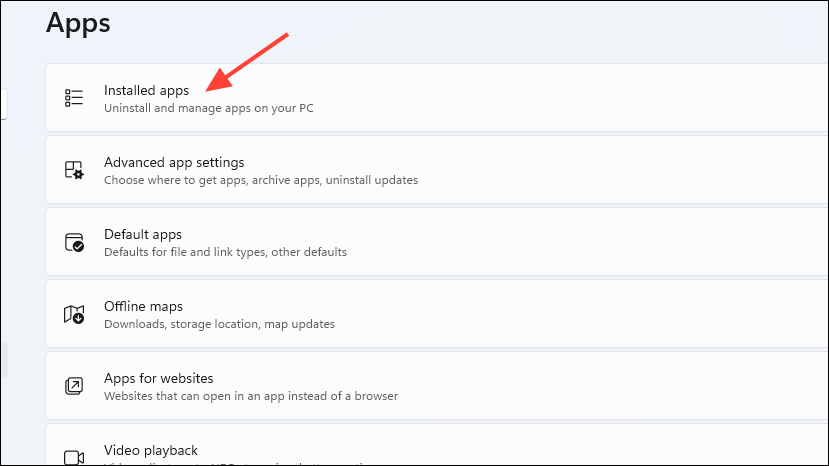
- Now, to remove the problematic program, navigate to it and click on the three dots to its right before clicking on the 'Uninstall' option.
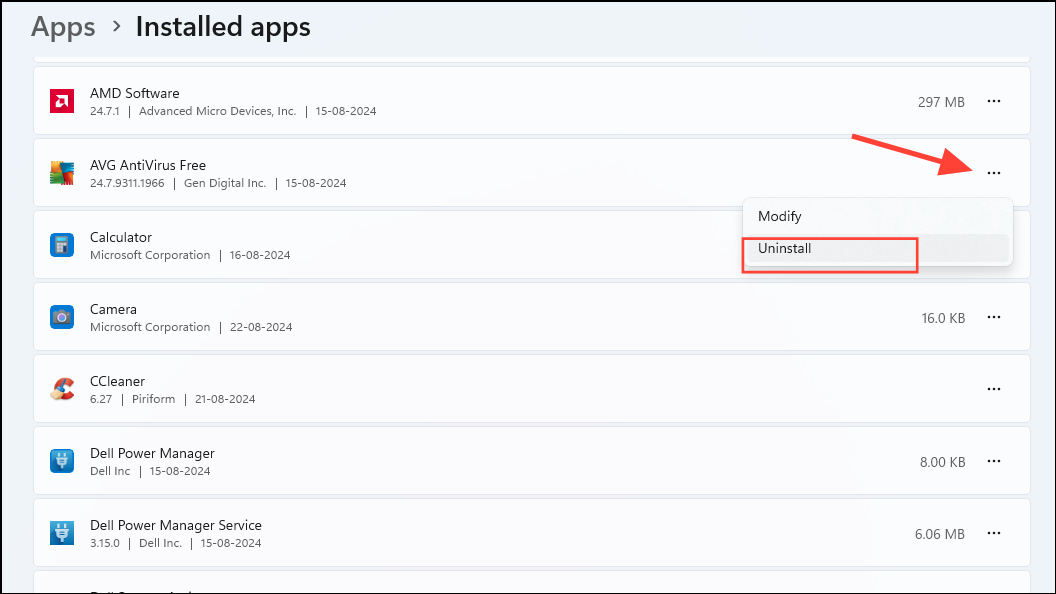
Fix 8: Use System Restore
System Restore lets you revert your PC to an earlier time when the 0xc0000001 error was not present. If you had set up a restore point earlier, you can use it to get rid of the error.
- Boot into the Windows Recovery Environment and click on 'Advanced options' before clicking on 'System Restore'.
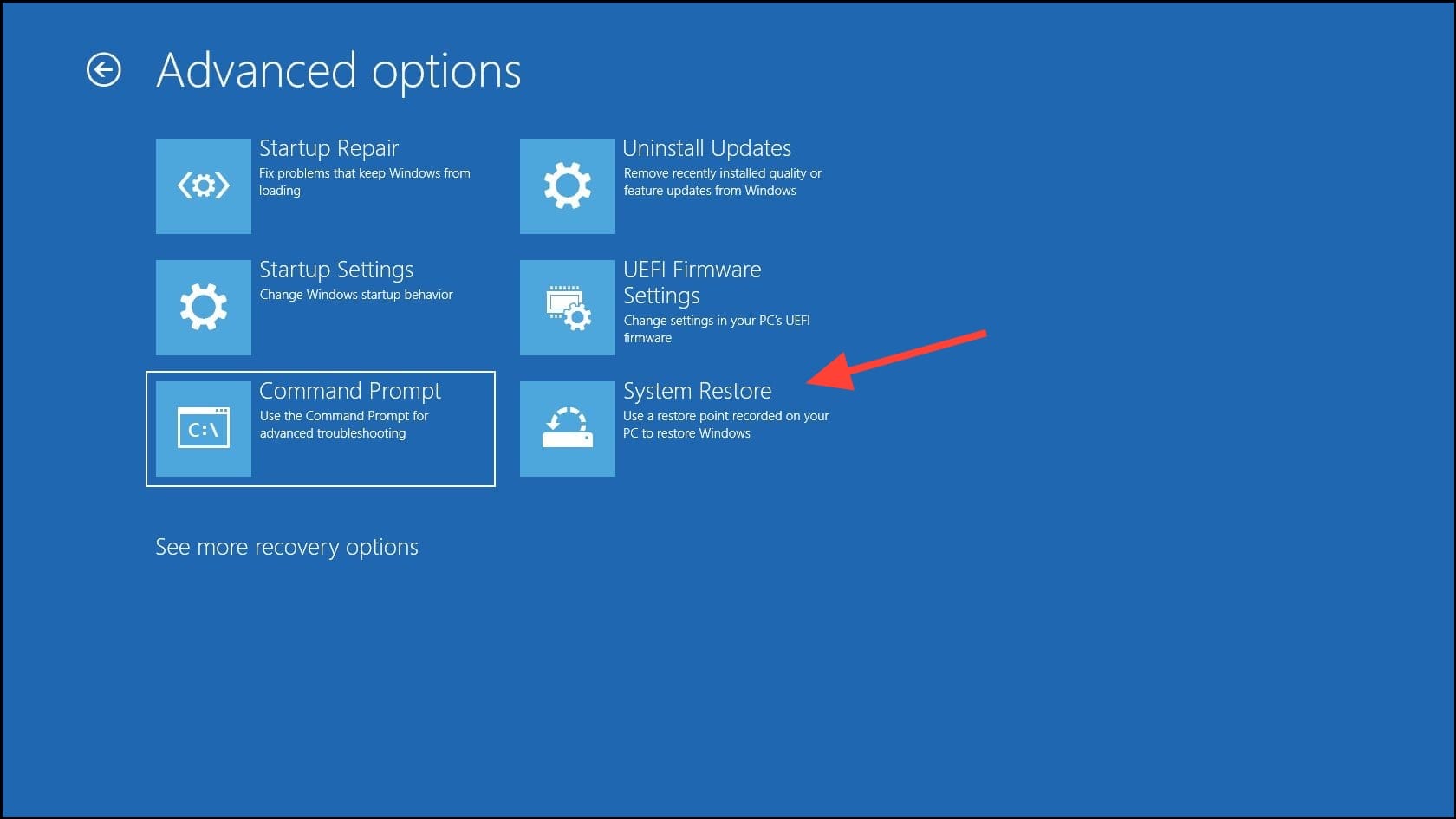
- When the System Restore dialog box opens, click on the 'Next' button.
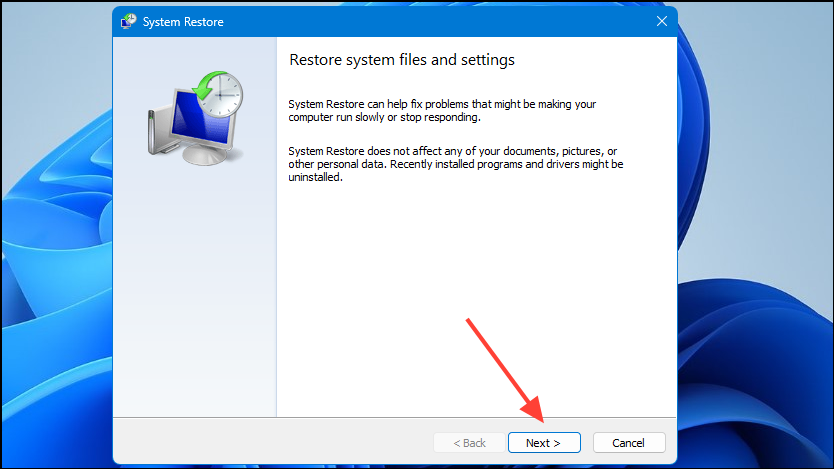
- Then click on the restore point you want to use before clicking on the 'Next' button again.
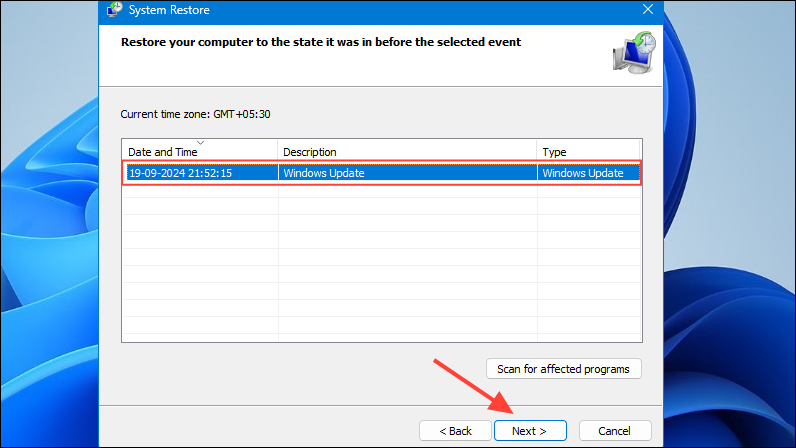
- Finally, click on the 'Finish' button and let Windows restart. Once the process is complete, you should no longer get the error code on your PC.
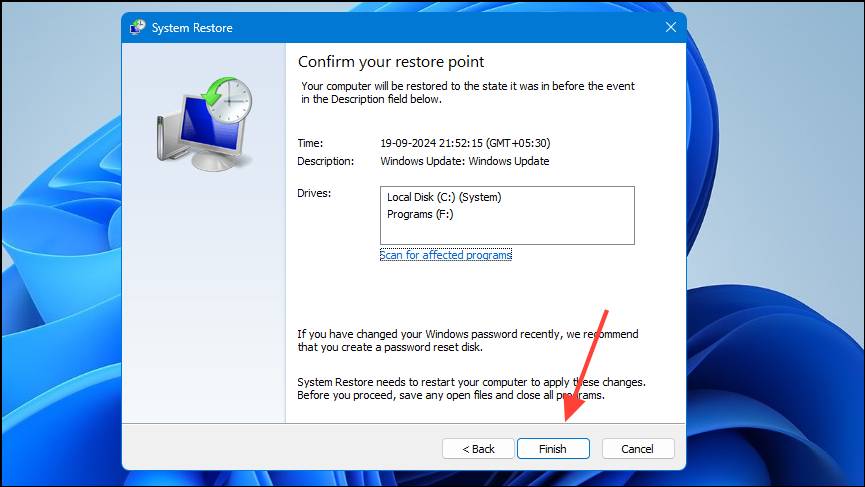
Fix 9: Reset your PC
Resetting your PC will remove all your programs and customizations and apply the defaults. It will be similar to performing a fresh Windows install and can help you sort out various errors preventing it from functioning normally.
- Open the Settings app using the
Win + Ishortcut and click on 'System' on the left.
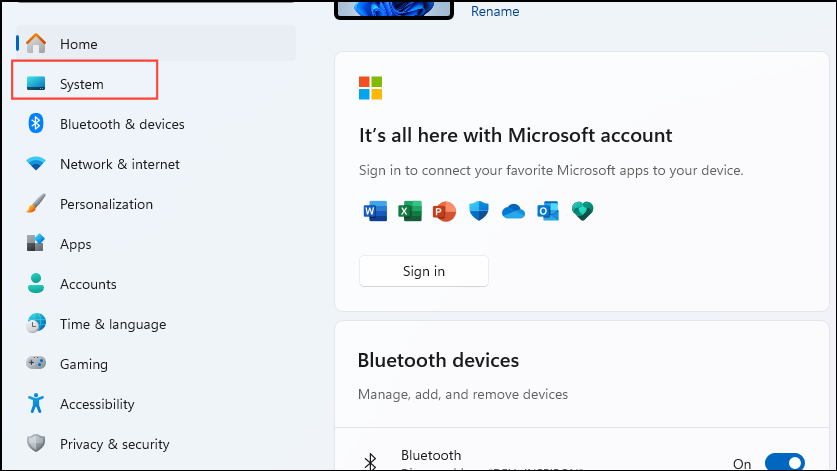
- Next, scroll down and click on 'Recovery'.

- On the Recovery page, click on the 'Reset PC' button on the right.
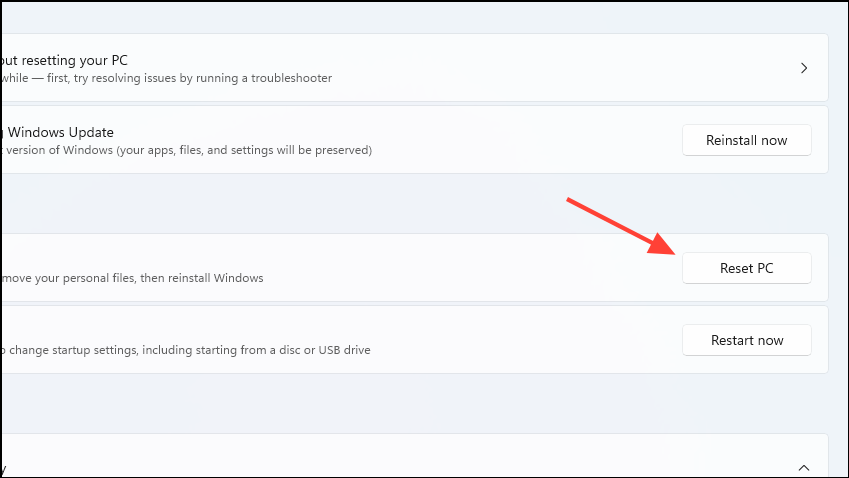
- Then click on 'Remove everything' in the pop-up that appears.

- Finally, click on 'Local reinstall' to reinstall Windows on your system. To get the latest updates, you can click on 'Cloud download' if you have a fast and stable internet connection.
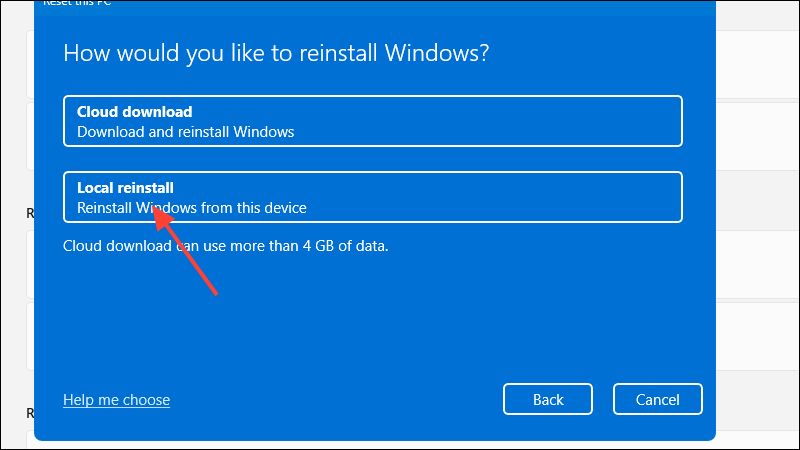
Things to know
- When troubleshooting the 0xc0000001 error, remove all external devices connected to your computer and check all components such as the RAM and SSD/HDD ensuring they are installed properly. Then try to boot into Windows, and if your PC boots up, connect your peripherals one by one to find out which one is causing the error.
- Sometimes Windows updates are buggy and can cause problems. If you find that the error started appearing after updating your system, consider uninstalling recent Windows updates.
- You can also go back to the previous version of Windows using your installation media and see if that resolves the error. However, this will only be possible if you did not format your system drive while installing your current OS.
- The last option is to completely reinstall Windows from scratch, removing everything. This is an extreme measure but may be your only option if nothing else works.


